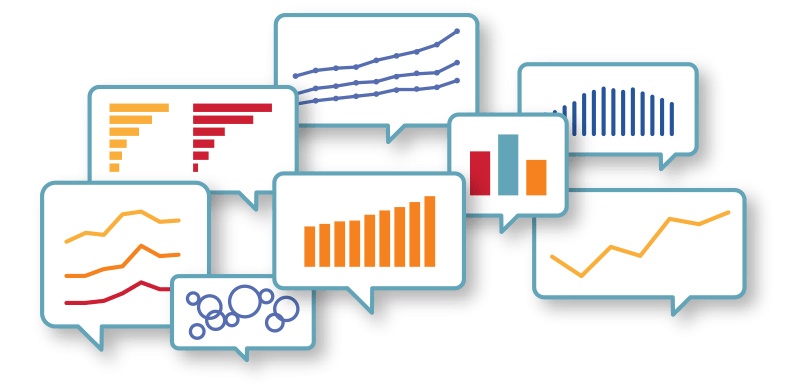How Data Culture can help unify in a time of crisis

What are we going to do? From public institutions to the world’s largest businesses, everyone is hovering on these six words. We are facing a level of uncertainty that most generations luckily have never faced. Those that endured crises like the 1918 flu pandemic or the Great Depression did not have access to something core that we have today—an abundance of data. And along with strategies, methods and tools, leaders now have the ability to better design a successful path forward.
When faced with a crisis unlike any other, data is a critical asset to determine next steps around how to conduct your business and how to take care of your employees. Leaders rely on their teams to analyze data from different areas of the business and to contribute to a holistic response effort. But the truth is that while having access to data is critical, the real impact comes from PEOPLE. People are the ones who analyze the data, glean insights from the data, share the data, and shape our responses to the data. Data on its own is worthless.
Earlier this year, Tableau conducted a global study with market intelligence firm IDC, composed of 1,100 responses across seven countries1. We wanted to understand what defines and separates data-driven cultures—those that have powerful and consistent data tools, processes, and behaviors—from the rest.
Although this study was conducted before the pandemic, I believe we can still take away some specific ideas and steps on what we can all do to help everyone in our organizations make faster, more informed decisions. Here are a few pointers on how to structure your data, teams, and processes in these uncertain times.
Nurture connections
When an emergency or crisis hits, collaboration is critical to create the best organization-wide response. For years at Tableau, we’ve witnessed organizations invest in both in-person and virtual data communities to nurture collaboration around data. In these communities, people feel comfortable sharing ideas, communicating best practices around their company data sources, and asking questions in an open forum.
For example, financial services firm Charles Schwab hosts a user group on their company SharePoint portal, where over 130 employees log in monthly to discuss topics like dashboard tips and internal processes for data analysis. Insurance and asset management company Swiss Life implemented a newsletter to share advice from analysts along with “dashboard shows,” which are community-based events where users share tips and learn from internal use cases from a variety of departments.
The research with IDC showed that 81% of respondents from data-leading organizations feel confident about getting data and analytics help when they need it1. In a rapidly-evolving crisis when time is of the essence, people need to know where to go when they run into a data issue or question. In a crisis, these communities are well-equipped to approach new data challenges because they already have trust with each other, processes established, and ambassadors to help the rest of the organization move swiftly.
Even if you don’t yet have a formal internal data community, you can identify how people are currently asking questions about data sources or use cases by consulting your analysts or data-savvy business users. Who are people going to for help with dashboard questions? How do they communicate these questions? It could be through collaboration platforms like Chatter or Slack or through regular meetings. Consider how to formalize these communities of users. In the beginning, it could be as simple as having analytics office hours for each department or creating an internal forum where people can reference past questions. This will result in a faster, agile response and establish the foundation for a more robust community in the future.
Align on trusted metrics
In times of uncertainty, priorities shift and so must your approach. One way that leaders create alignment during a crisis is through a set of new critical metrics. But once you’ve aligned on these metrics, how do you measure progress?
Start by assessing your existing data resources—like data sets and dashboards—that can be easily adapted to address new questions. For example, retailers are shifting their focus towards e-commerce as brick-and-mortar stores are forced to close. To avoid deadstock, they may run online promotions to discount older inventory. In this case, they could use an existing dashboard around promotions, adapting it to track specific promotions related to COVID-19.
For the data sets that may not fully align to your new metrics, consider enriching them with additional sources of information to paint a broader picture. This could be data from another team or department or from an external source. World Food Programme (WFP) for example, maintains a database of children receiving meals around the world through their School Meals Programme. When COVID-19 caused schools to close, the agency combined this data source with a source from UNESCO to understand the global impact and track the success of their repurposed programs.
At the beginning, these resources don’t have to be perfect, but they should be shared broadly across the organization so that everyone is working from the same source of truth. Shared data resources are a powerful way to unite employees, making it easier to pivot as a unit when necessary.
Model data-leading behaviors
How often do you bring data-driven recommendations or perspectives to the table? As we concede to an ongoing level of uncertainty, you have likely relied on data to guide your decisions. This is not a time to rely on anecdotes or personal opinions. Business sustainability and even lives are at stake.
The research with IDC showed that 59% more respondents from data-leading organizations said their executives model working with data and analytics. Additionally, 60% more respondents said that they require use of data in meetings and 67% said they require data to support recommendations and/or decisions1.
In a crisis, leaders need to encourage data use among their employees, but also use data to guide their company-wide response. For example, TVS Credit is a non-banking financial company that provides vehicle and motorcycle lending for a large portion of India. In response to COVID-19, senior leaders created a task force dedicated to supporting employees with finance and health resources. They created a dashboard to track, monitor, and respond to over 14,000 employees across 130 locations to ensure that they’re adapting quickly to their needs. This is just one example of how leaders are using data to understand the impact on their business and guide their own actions moving forward.
Data as our guide
So, what are we going to do? Data is powerful, but it’s only one piece of the puzzle. You need to empower people to analyze, understand, and communicate data to leverage it to its full potential, especially in times of crisis. Trust your people to lead with data and along the way, model the data-driven behaviors that you’re looking to foster. Determine the data processes that are working for them in the current climate and use that as a guide for how to create a long-term plan.
At Tableau we’re here to help you navigate your path forward. We’ve curated a variety of relevant resources for leaders to leverage during this time:
- Free eLearning for your teams.
- Starter dashboard to track case data on the Tableau Data Hub.
- Curated visualization gallery from the Tableau community.
- Resource page with tips from experts, access to upcoming virtual events, and assets to help you move confidently and quickly.
To learn more about Data Culture, read the full IDC InfoBrief.
1. Source: IDC InfoBrief, sponsored by Tableau, Why You Should Care About Data Culture, April 2020.
Related Stories
Subscribe to our blog
Get the latest Tableau updates in your inbox.








